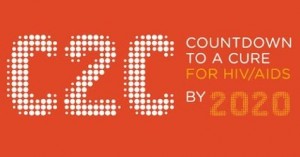 NEW YORK, N.Y., – amfAR, The Foundation for AIDS Research, has announced that it has created a $100 million investment strategy in support of its Countdown to a Cure for AIDS initiative, launched last year with the aim of developing the scientific basis of a cure by 2020. The establishment of the amfAR Institute for HIV Cure Research within a major academic research institution with a grant of $20 million will be the centerpiece of the investment strategy.
NEW YORK, N.Y., – amfAR, The Foundation for AIDS Research, has announced that it has created a $100 million investment strategy in support of its Countdown to a Cure for AIDS initiative, launched last year with the aim of developing the scientific basis of a cure by 2020. The establishment of the amfAR Institute for HIV Cure Research within a major academic research institution with a grant of $20 million will be the centerpiece of the investment strategy.
“This represents the greatest expansion of amfAR’s grant making in the 30-year history of the Foundation,” said Kevin Robert Frost, amfAR’s Chief Executive Officer. “We’re very excited to be launching this strategy and establishing an institute dedicated exclusively to the pursuit of a cure for HIV. Concentrating the minds and the efforts of leading AIDS cure researchers under one roof will facilitate the rapid sharing of knowledge and ideas and create the kind of synergy needed to accelerate the search for a cure.”
amfAR has identified four key challenges that must be addressed and overcome in order to realize a cure. Each of the four relates to the so-called reservoirs of persistent virus that present the most formidable obstacle to a cure. Scientists must pinpoint the precise locations of these reservoirs, determine how they are formed and persist, quantify the amount of virus in them, and, finally, eradicate the reservoirs from the body.
The Institute is expected to house a team of researchers with a track record of collaboration who will work on all four of the key challenges across the research continuum—from basic science to clinical studies. The academic institution that will house the Institute will be selected in the fall of 2015.
To complement the Institute, amfAR will award a range of grants totaling $80 million to support the work of research teams worldwide:
· Innovation Grants-These two-year awards of up to $200,000 each will enable researchers to test innovative ideas supported by limited preliminary data.
· Impact Grants-These grants of up to $2 million each over four years will support the in-depth development of concepts already underpinned by preliminary data showing genuine potential for achieving a cure.
· Investment Grants-Aimed at recruiting the experience and expertise of scientists from outside the field of HIV, these $1 million grants will be awarded over a four-year period. Grantees may have expertise in fields such as cancer, neuroscience or inflammatory disease that can directly inform efforts to cure HIV.
· Opportunity Fund-This funding mechanism will enable amfAR to respond quickly to emerging and unforeseen research opportunities.
· ARCHE- Launched in 2010, the amfAR Research Consortium on HIV Eradication, or ARCHE, supports collaborative teams of scientists in the U.S. and around the world working on a range of HIV cure strategies.
At a meeting on February 11, amfAR’s Board of Trustees approved the first round of 11 Innovation Grants totaling close to $2 million. One of the new grants will support a study by Dr. Benjamin Burwitz of Oregon Health and Science University in Portland that could help determine the precise mechanism of action that led to the first and only known HIV cure in “the Berlin patient.” The cure was the result of a stem cell transplant involving donated cells with a genetic mutation rendering them impervious to HIV infection. Dr. Burwitz and colleagues plan to generate a non-human primate model that will allow the testing of many hypotheses concerning the Berlin patient’s cure, as well as, for example, gene therapy interventions designed to cure HIV.
The amfAR Board also approved a $1.5 million ARCHE grant to support a collaborative research project by teams working at Rockefeller University in New York, Aarhus University Hospital in Denmark, and the University Hospital of Cologne in Germany. One of the leading strategies being pursued to cure HIV is known as “shock and kill,” which involves the use of a drug to induce latently infected cells to produce HIV so that the immune system can detect and then kill infected cells, perhaps by boosting the ability of a weakened immune system to do so. The researchers plan to test the ability of the cancer drug romidepsin, shown to be effective at shocking HIV out of hiding, combined with an antibody to eliminate infected cells and thus reduce the size of the persistent HIV reservoir. They will the first to test a combination cure approach that includes a “shock” and “kill” component in people with HIV.
The research supported by amfAR’s Countdown to a Cure initiative is guided by a Cure Council, a group of eminent scientists that includes Nobel Prize winners Dr. Françoise Barré-Sinoussi, co-discoverer of HIV, and Dr. David Baltimore of the California Institute of Technology. They are joined on the Council by Dr. Myron Cohen of the University of North Carolina, Dr. Beatrice Hahn of the University of Pennsylvania, Richard Jefferys of Treatment Action Group, and Dr. Carl June of the University of Pennsylvania.
“Our investment strategy is designed to ensure that we can support every scientific effort across the spectrum of biomedical research that has the potential to overcome one or more of the key scientific barriers to a cure for HIV,” said amfAR Vice President and Director of Research Dr. Rowena Johnston. “One of the hallmarks of amfAR’s research program is our ability to turn on a dime and rapidly funnel resources to studies that show promise and potential. Our aim is to combine that flexibility and rapid response with sufficient resources to develop the scientific basis for a cure by 2020.”











